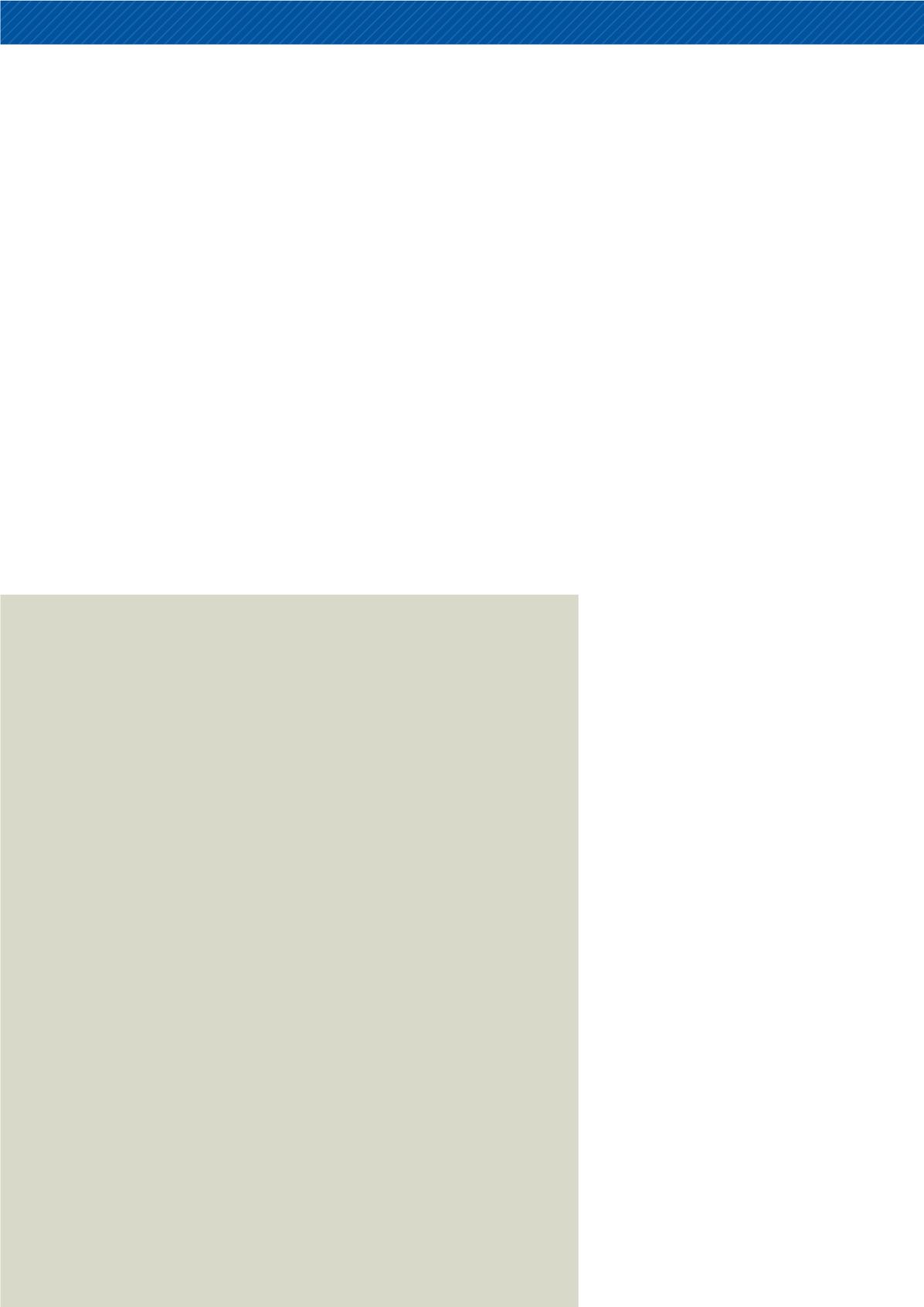

INDUSTRY in FOCUS
Small Business
The small business entity turnover
threshold will be increased from $2
million to $10 million from 1 July
2016. The increased threshold means
businesses with an annual turnover
of less than $10 million will be able to
access existing small business income
tax concessions including the:
• Lower small business corporate tax
rate (which will be reduced to 27.5%
from the 2016/17 income year);
• Simplified depreciation rules including
the instant asset write off threshold of
$20,000 available until 30 June 2017;
Federal Budget 2016 –What’s in it for you?
By Richard van der Merwe and David Hinchey, Fordham Business Advisors
The 2016 federal budget contains significant ramifications for hire and rental business
owners.* Of particular interest will be the various measures relating to the taxation of
small and medium sized enterprises as well as the proposed changes to superannuation.
Let’s take a look at what may affect you.
• Simplified trading stock rules;
• Option to account for GST on a cash
basis and pay GST instalments as
calculated by the ATO;
• Simplified method of paying PAYG
instalments calculated by the ATO; and
• Other tax concessions such as the
extension of the FBT exemption for
work-related portable electronic
devices available from 1 April 2016
and the immediate deduction of
professional expenses.
The increased $10 million threshold will
not be applicable for accessing the small
business capital gains tax concessions.
Superannuation
Lifetime cap for non-concessional
superannuation contributions
A lifetime non-concessional
superannuation contributions cap of
$500,000 will be introduced.
Concessional contributions
The annual cap on concessional
superannuation contributions will be
reduced to $25,000 from 1 July 2017.
Transfers into tax-free pension
phase
A balance cap of $1.6 million on the total
amount of accumulated superannuation
an individual can transfer into the tax-
free retirement phase will be introduced
from 1 July 2017. Amounts in excess of
$1.6 million can remain in the fund in an
accumulation account where earnings
will be taxed at a concessional rate of
15%.
Transition to retirement income
streams (TRIS)
The tax exemption on earnings of assets
supporting a Transition to Retirement
Income Streams (TRIS) will be removed
from 1 July 2017 (ie: income streams of
individuals over preservation age but not
retired).
Personal super restrictions removed
From 1 July 2017 all individuals up to age
75 will be allowed to claim an income tax
deduction for personal superannuation
contributions. The work test will also be
abolished.
Personal income tax
The threshold at which the 37% marginal
tax rate for individuals commences will
increase from taxable incomes of $80,000
to $87,000 from 1 July 2016.
For more on the 2016 federal budget
visit website: www.fordhamgroup.com.
au/info/articles/federal-budget-2016/ or
contact Richard van der Merwe or David
Hinchey on: 03 9611 6066.
* Note the proposed changes are not
yet law and will rely on the government
being re-elected and the legislation being
passed through parliament.
Are you measuring operational progress?
Participating in the next HRIA Best
Practice Survey (running in August)
will help you understand current and
emerging best practices that can be
integrated into your existing operations.
The survey helps measure hire
industry operational progress, with
results providing useful and current
information about the hire industry
overall.
According to HRIA CEO, James
Oxenham: “Members gain a new
perspective of assessing their KPIs and
overall business performance when they
participate in the Best Practice Survey.
“They also gain a feel for where they
stand when benchmarking against
industry performance. Sensitive
information remains confidential and
no company names are published, but
the data gives a good picture for HRIA
members to assess their position,” James
said.
Benchmarking tracks operation and
business performance, compares
performance to that of market peers and
determines the value of adopting best
practices. It can also help identify aspects
of an organisation that excel and those
in need of improvement, as well as
detecting strengths and vulnerabilities.
All Best Practice Survey participants
receive a detailed report which provides
highlights of key findings and valuable
insights around best in class KPIs. The
information is also edited and put into a
readable summary (pdf) on the member
section of the HRIA website.
Findings are compared across several
years of collated and collective industry
data offering a rare and valuable insight
to how the hire market is developing in
Australia.
The past six years of survey data have
been assessed and commentary on
trends as well as the previous year’s
survey results are all presented to each
participant.
The HRIA Best Practice Survey is a
vital part of the HRIA’s continuing effort
to provide members with the tools to
overcome organisational challenges.
Enhance the value of your membership
by participating in this next survey.
Members will be emailed a link to the
survey.
Understanding how your industry operates is critical to
the success of your business. So if you wanted to, could
you describe your industry’s best practices?
22
HIRE AND RENTAL NEWS • AUGUST 2016









